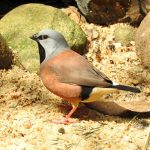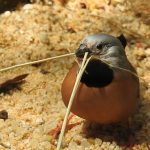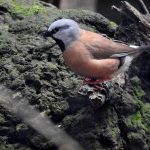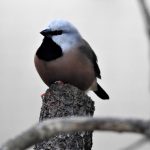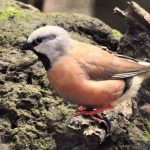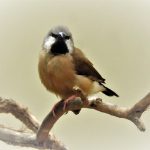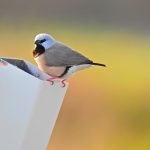BLACK-THROATED FINCH
The Black-throated Finch is a small bird measuring about 12-13 cm in length. It has a brownish-grey plumage on the upperparts, with a black bib and throat, which gives it its name. The underparts are pale grey, and it has a black tail with white outer feathers. Both males and females have similar plumage, but the male has a slightly larger bib.
The Black-throated Finch is endemic to Australia and is found in specific regions. It occurs in north-eastern Queensland, particularly in the Cape York Peninsula, and extends into the northern parts of the Northern Territory. It inhabits grasslands, savannas, and open woodlands.
This finch species prefers open habitats with grasses, shrubs, and scattered trees. It can be found in a variety of habitats, including grassy woodlands, grassy wetlands, and areas with spinifex grass. It relies on grass seed for its diet and requires suitable vegetation structure for foraging and nesting.
Black-throated Finches primarily feed on grass seeds, including those from native grasses and weeds. They use their small, pointed beaks to extract seeds from grass seed heads. They may also consume small insects and their larvae as a supplemental food source.
Breeding usually occurs during the wet season, which varies depending on the region. The Black-throated Finch constructs a cup-shaped nest made of grass and other plant materials. The female lays a clutch of 2-4 eggs, and both parents participate in incubation and raising the chicks.
The Black-throated Finch is listed as endangered by the Australian Government due to habitat loss and fragmentation. Land clearing for agriculture and urban development has significantly reduced its suitable habitat. Conservation efforts focus on protecting and restoring the remaining grassland and woodland habitats, as well as ensuring sustainable land management practices in its range.
The Black-throated Finch is a beautiful finch species that is facing conservation challenges due to habitat loss. It’s call forms a series of phrases with soft flute-like whistles. Its unique appearance, including the distinctive black bib, and its reliance on grass seeds make it a special bird to observe in the wild.

